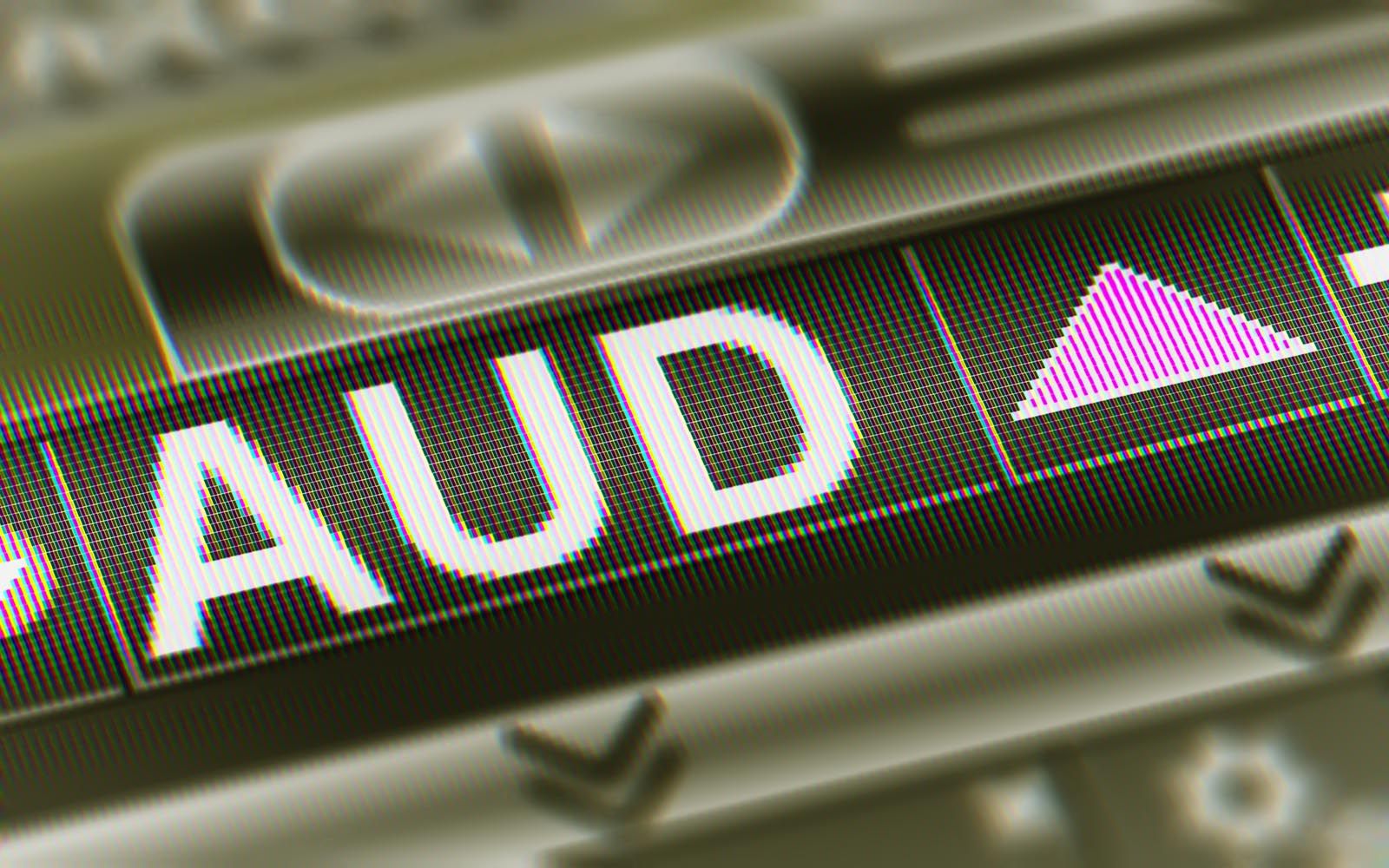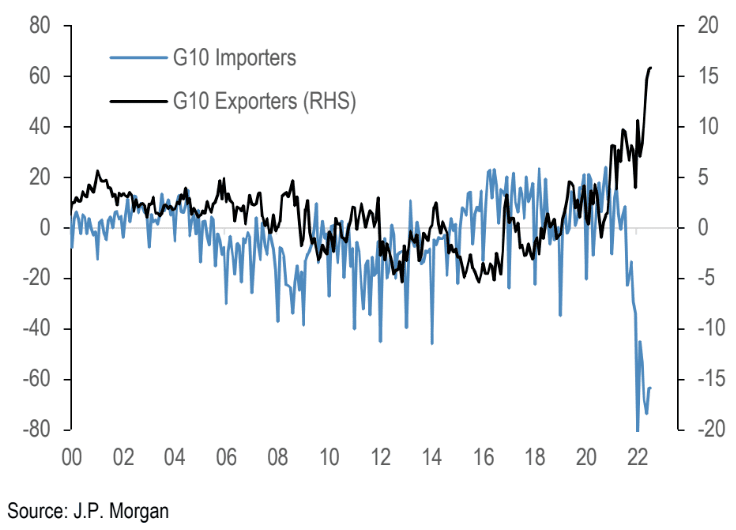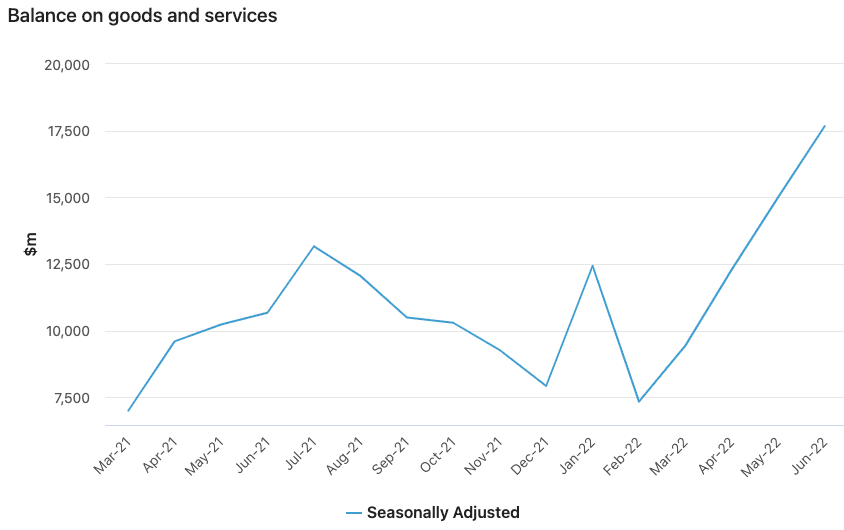JP Morgan Forecasts Australian Dollar Strength
- Written by: Gary Howes
- AUD favoured by JP Morgan
- Seess gains vs. AUD and USD ahead
- But suffers losses this week
- As wages, employment disappoint

Image © Adobe Images
Foreign exchange analysts at JP Morgan are backing a rise in the Australian Dollar over coming months, saying the country's record breaking trade surpluses will provide a fundamental source of support.
Analysts at the investment bank say currency markets are increasingly reactive to trade dynamics in a world of scarce raw resources and high commodity prices.
"We remain constructive on AUD, particularly on the crosses," says Patrick R Locke, FX Strategist at JP Morgan.
Research from JP Morgan finds that broader foreign exchange performance has become materially more aligned with the direction of trade flows, i.e., currencies tend to appreciate alongside surpluses, and vice-versa, relative to their long-term averages.
They find the divergence in trade flows between G10 surplus and deficit currencies has never been this stark. Surplus countries are considered those that are running significant trade surpluses, including Australia, Canada and Switzerland.
Above: The sum of monthly merchandise goods trade balances for 1H22 G10 net importers (EUR, GBP, JPY) and exporters (AUD, CAD, CHF).
Net importers like the Eurozone, the UK and Japan are meanwhile seeing their currencies underperform.
The ABS reported in August that Australia's seasonally adjusted balance on goods and services surplus increased $2,654m to $17,670m in June.
The record trade surplus was driven by a surge in the value of commodity exports, such as gas, iron ore and gold.
Above: Australia's trade surplus continues to surge.
Compare GBP to AUD Exchange Rates
Find out how much you could save on your pound to Australian dollar transfer
Potential saving vs high street banks:
A$48.75
Free • No obligation • Takes 2 minutes
"Terms of trade gains that should be AUD-positive, particularly in energy exports," says Locke.
"We remain constructive on AUD, particularly on the crosses, as the economy’s strong supply-side performance through the pandemic should mitigate the risk of the RBA having to overtighten, and its commodity exporter status also provides natural insulation from stagflationary forces," he adds.
JP Morgan strategists have accordingly opened a trade that would yield profit on a fall in the Euro against the Australian Dollar.
"Given our bearish bias around EUR, we think any pro-risk trades are best executed against the euro rather than the dollar," says Locke in a note out this week.
The investment bank's foreign exchange strategy team already holds a 'long' AUD/NZD position as an expression of their expectation for AUD outperformance.
The JP Morgan 'house view' is that the Australian Dollar will rise to 0.70 against the U.S. Dollar by the end of the year, ahead of a forecasted move to 0.72 by the end of the first quarter and 0.74 by the end of June 2023.
Their GBP/USD forecast is for rates of 1.15, 1.16 and 1.17 for these respective points.
This implies a GBP/AUD exchange rate forecast profile of 1.64, 1.61 and 1.58.
Australia's Dollar has meanwhile traded softer following the release of disappointing labour market data.
The country reported a 40.9K decline in employment in July, a first fall since October 2021, with analysts looking for an increase in 25K.
"AUD/USD inched lower to near 0.6920 following the mixed July labour market report," says Carol Kong, a strategist at Commonwealth Bank of Australia.
The GBP/AUD meanwhile defended a 1.0% gain made the day prior, near 1.7357.
Nevertheless, the unemployment rate eased to 3.4% due to a sharp fall in the participation rate.
"The downside surprise on employment adds weight to the case for the RBA to slow the pace of rate hikes at the next policy meeting in September. Our Australian economics team will firm up their call for the September meeting in due course," says Kong.
This is the second disappointing domestic data release out of Australia this week, with the currency struggling mid-week following the release of some softer than expected wages data.
Australia nevertheless reported its fastest rise in wages in almost eight years, but this was less than half the headline inflation rate, creating a record 'real' wage fall.
The quarterly wage price index rose 0.7% in the second quarter, taking the annual increase to 2.6% year-on-year, the ABS said on Wednesday.
The market was looking for a rise of 2.7% year-on-year and 0.8% quarter-on-quarter.
Compare GBP to AUD Exchange Rates
Find out how much you could save on your pound to Australian dollar transfer
Potential saving vs high street banks:
A$48.75
Free • No obligation • Takes 2 minutes






